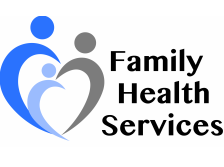Celebrating Pride Month: Spotlight on LGBTQ+ Health and Diabetes
NATIONAL PRIDE MONTH
June is not only a month of colorful parades, celebrations, and love, but it also serves as a powerful reminder of the challenges faced by the LGBTQ+ community and the importance of their health and well-being. As we commemorate Pride Month, it is essential to shed light on the connection between the LGBTQ+ community and diabetes, emphasizing the significance of support and addressing the disparities that exist within this group:
- Healthcare Disparities: The LGBTQ+ community often faces barriers when accessing healthcare services, which can lead to delayed diagnoses and inadequate treatment. Discrimination, lack of understanding, and limited cultural competence among healthcare providers may create a hostile environment that deters individuals from seeking appropriate care. These disparities can have severe consequences for individuals with diabetes, as timely management and access to quality healthcare are crucial for their well-being.
- Social Stigmas and Mental Health: The LGBTQ+ community faces elevated levels of stress, discrimination, and social isolation, leading to mental health issues like anxiety and depression. Coupled with the demands of managing diabetes, these challenges can intensify. While diabetes management entails self-care and healthy lifestyle choices, the additional burdens of societal stigma and mental health concerns make these tasks even more daunting.
- Lifestyle Factors: Lifestyle factors, such as diet, exercise, and substance use, can impact the risk of developing diabetes. LGBTQ+ individuals may face unique challenges in maintaining a healthy lifestyle due to factors like limited access to nutritious food, higher rates of tobacco and alcohol use, and barriers to safe spaces for physical activity. Addressing these barriers is crucial in reducing the risk of diabetes and improving overall health outcomes within the LGBTQ+ community.
Importance of Support:
Support is crucial in addressing disparities and challenges faced by the LGBTQ+ community with diabetes.
- Accessible and Inclusive Healthcare: It is imperative for healthcare providers to create welcoming and inclusive environments for LGBTQ+ individuals. Education and training for healthcare professionals on LGBTQ+ health issues, as well as understanding the specific needs of this community, can help bridge the gap and provide quality care to all patients. Additionally, accessible healthcare services, such as LGBTQ+ clinics or specialized support groups, can play a pivotal role in providing comprehensive care.
- Community Support and Advocacy: Establishing community support groups and organizations can offer a safe space for individuals within the LGBTQ+ community to share experiences, find encouragement, and access valuable resources. These support networks can foster a sense of belonging, combat social isolation, and empower individuals to manage their diabetes effectively.
- Awareness and Education: Raising awareness about the unique challenges faced by the LGBTQ+ community concerning diabetes is crucial. Promoting educational initiatives, disseminating accurate information, and debunking myths can empower individuals, reduce stigma, and encourage regular screenings and self-care practices.
As we celebrate Pride Month, it is vital to recognize the connection between the LGBTQ+ community and diabetes. By addressing healthcare disparities, understanding the impact of social stigmas and mental health, and promoting inclusive support systems, we can create a healthier and more equitable environment for all. Together, we can strive for a future where every individual, regardless of their sexual orientation or gender identity, can access quality healthcare, live authentically, and manage their diabetes effectively.
Content Source: ChatGPT. (2023, June 1). “Write a blog post that is 500 words or less about June being pride month and the connection between LGBTQ+ and diabetes. Emphasize the importance of having support and any disparities that exist for this group.” OpenAI. https://openai.com. Content fact checked by Leslie Johnson, MS, RD, LD
The Diet-Betus – our version of recipe of the month just as tasty but with a healthy tweak here and there. Summer is almost here and a frozen treat is just what we need! Try this Yogurt Bark for a protein and calcium packed treat. Try a lower sugar yogurt to help prevent your blood sugar from spiking. Here’s the recipe:
Yogurt Bark
Servings: 6
Prep Time: 10 minutes
Total Time: 2 hours (because it needs to freeze)
Ingredients:
- 2 cups Two Good vanilla Greek yogurt
- ½ cup diced strawberries
- ½ cup blueberries
- ¼ cup granola
Instructions:
- Line a rimmed baking quarter sheet with wax or parchment paper.
- Pour the yogurt into the baking dish and spread evenly on the prepared baking sheet so that it fills the shape.
- Top with strawberries, blueberries, and granola
- Place in the freezer until the yogurt is firm, about 3 hours.
- Cut into 12 pieces, and enjoy cold.
- Store leftovers in the freezer.
Nutrition: Serving Size = 2 pieces
72 calories, 1 g saturated fat, 7 g carb, 1 g fiber, 6 g protein, 1% DV sodium, 3% DV potassium, 20% DV vitamin A, 50% DV vitamin C, 3% DV calcium, 5% DV iron
Recipe from: https://feelgoodfoodie.net/recipe/frozen-yogurt-bark/#wprm-recipe-container-40676


